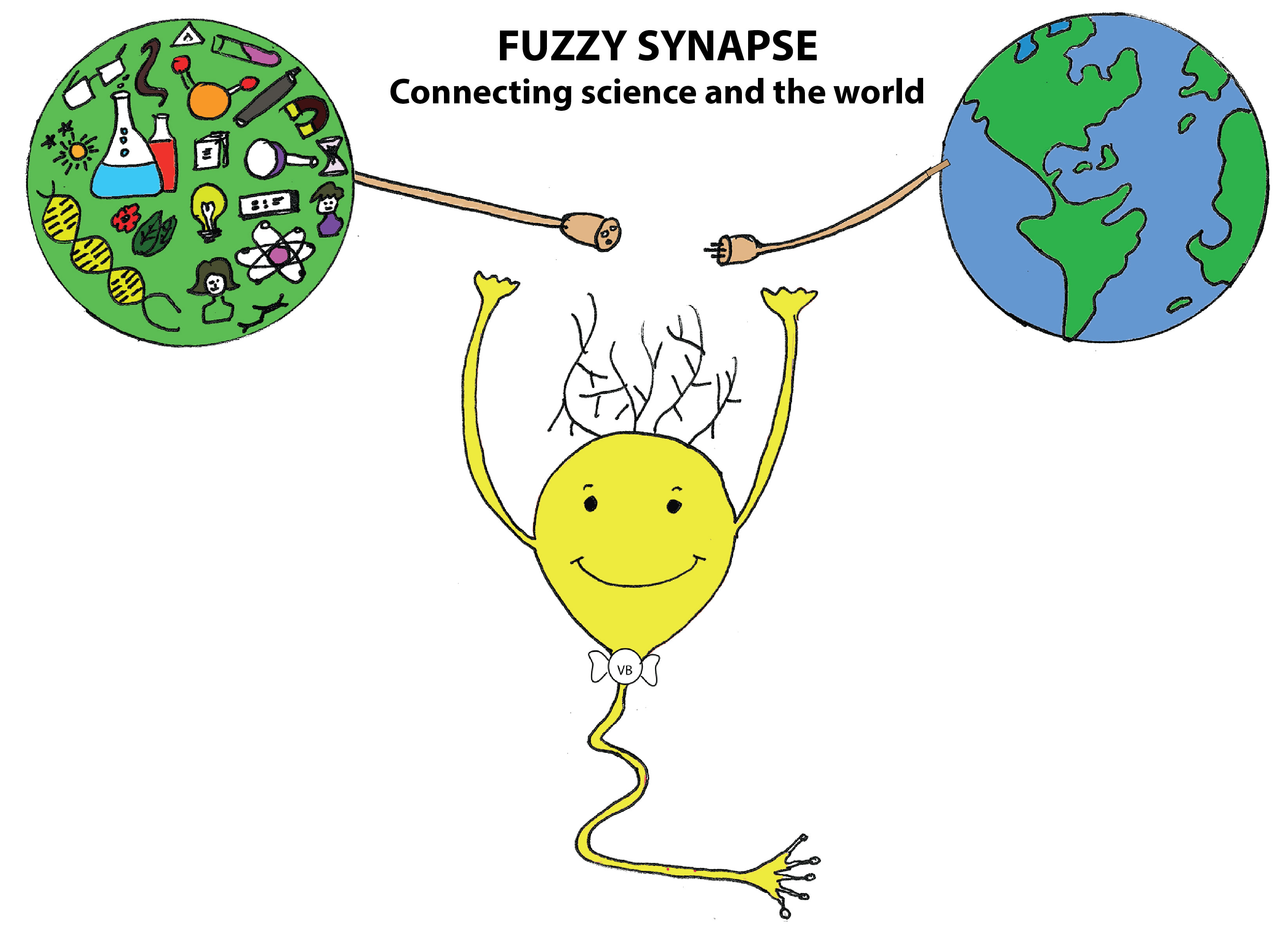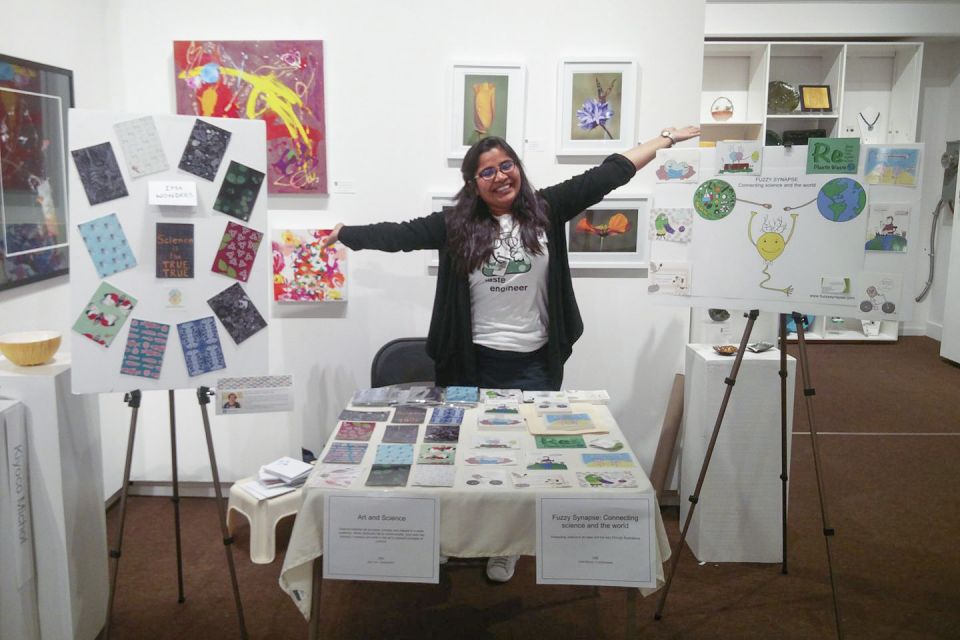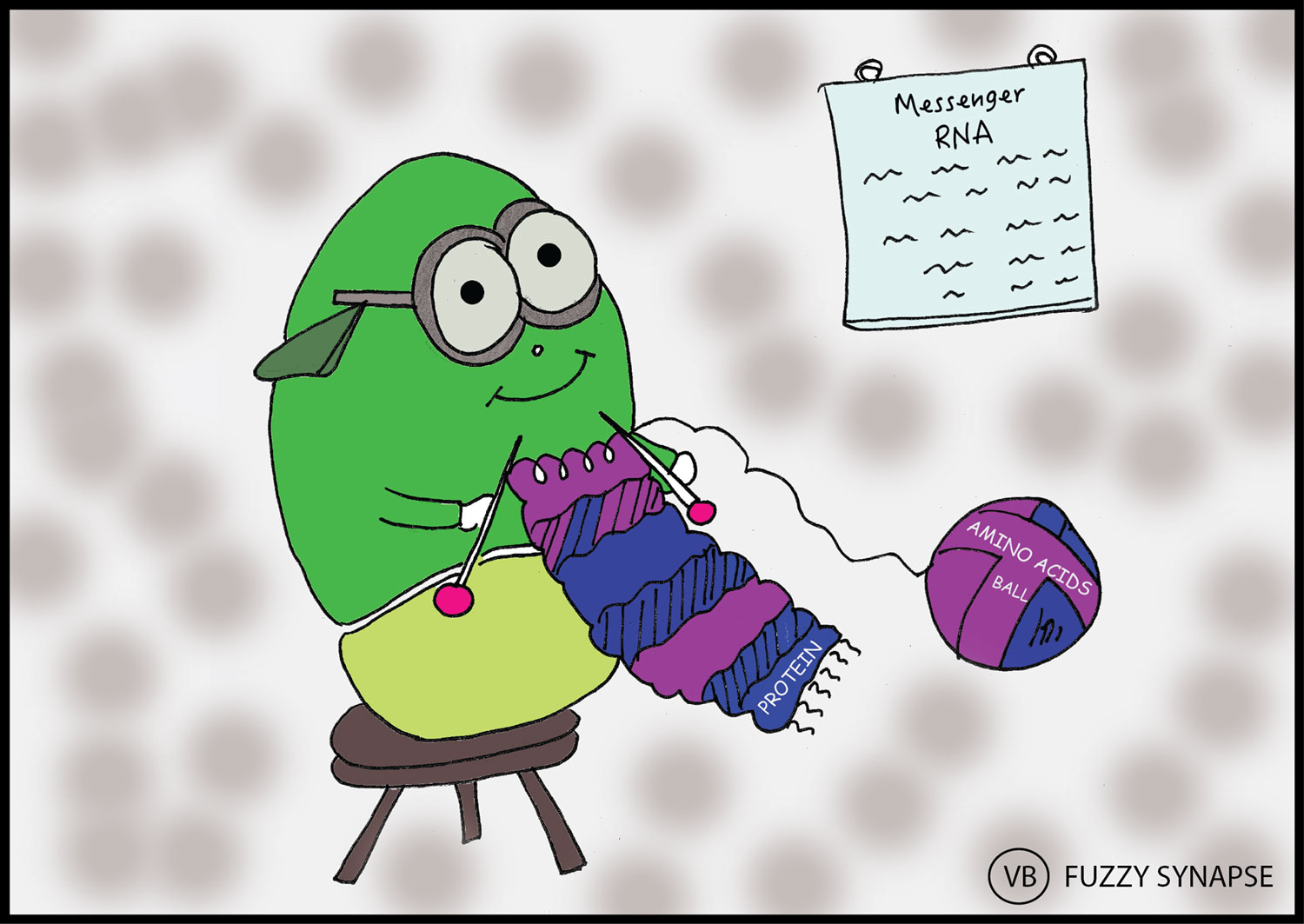Listening to scientists discuss their work can sometimes leave non-scientists frustrated and confused when they don’t understand the concepts.

Vinita Bharat’s Fuzzy Science platform takes a humorous approach to communicating science to make it more accessible. (Image credit: Vinita Bharat)
A Stanford postdoctoral researcher is offering help with a new website that takes a humorous approach to communicating science in the hope of making it more accessible.
Vinita Bharat is a postdoc in the Department of Neurosurgery at the School of Medicine. In April, she launched fuzzysynapse.com, which features her original illustrations, comics and videos about a range of topics, from chemistry to astrophysics. The goal, she says, is to simplify science for audiences that may feel the subject matter is otherwise too complicated.
“I feel there is a gap that needs to be bridged in communicating science,” says Bharat, whose audience includes college students, schoolchildren, researchers, academics and non-scientists.
“I try to narrow topics down to a simple drawing so they can understand and visualize what scientists are doing inside the lab,” she says.

Neurosurgery postdoc Vinita Bharat exhibited her illustrations at the San Mateo County Taste of Science festival. (Image credit: Courtesy Vinita Bharat)
Her work addresses subjects such as global warming, CRISPR and genetics. One of her first illustrations, about Einstein’s theory of relativity, compares how we temporally interpret an unpleasant experience, such as burning one’s hand on a stove, with a pleasant one, such as spending time with a loved-one. The former, she explains, may be quick, but the experience will seem prolonged. In contrast, a pleasant experience may last a long time, but can seem fleeting.
Another illustration visualizes the process of synthesizing proteins in living cells where ribosomes use what’s called messenger RNA and amino acids to make proteins. The sketch depicts an anthropomorphized ribosome knitting a ball of yarn (the amino acids) into a cloth (the protein) while reading a message (the RNA). The actual process, Bharat explains, is the same for all proteins. “Every protein in your body is synthesized this way,” she says.
About a year ago, Bharat began posting her illustrations on her Facebook page and other social media platforms. After several months of seeing her content grow in popularity, she decided to launch her website. She credits a friend for the name, Fuzzy Synapse.

Illustration visualizes the process of synthesizing proteins in living cells where ribosomes use messenger RNA and amino acids to make proteins. An anthropomorphized ribosome knits a ball of yarn (the amino acids) into a cloth (the protein) while reading a message (the RNA). (Image credit: Vinita Bharat)
“The idea behind the name is that the connection between science and society is so fuzzy,” she says. “And synapse, in biological terms, means two neurons connecting to each other.”
When she’s not in the lab, Bharat is busy sharing her passion for science communication. Her artwork has been featured in publications like Stanford Medicine’s SCOPE blog. And she recently exhibited her illustrations at the Taste of Science festival, an annual gathering in San Mateo County for scientists and science enthusiasts to share research and projects. In her home country of India, Bharat has spent time in schools talking to students about science.
At Stanford, science and the humanities are often considered disparate fields. But Bharat insists that the two can coincide.
“Right now, there’s such a need to be interdisciplinary,” she says, adding that it’s important for researchers, students and academics to be open to incorporating other subjects into their work. “I think in coming time, artists are moving toward explaining scientific topics.”
But until then, Bharat is enjoying seeing her platform grow and help others engage with the field she loves so much. “I’m just trying to get it across that science is fun,” she says.